Africa: a modern history
Published in 18th–19th - Century History, 20th-century / Contemporary History, Book Reviews, Issue 4 (Jul/Aug 2006), Reviews, Volume 14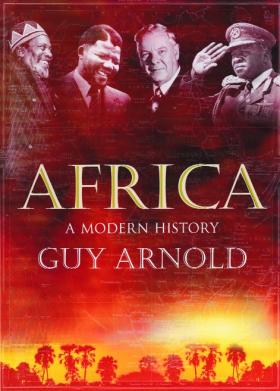 Africa: a modern history
Africa: a modern history
Guy Arnold
(Atlantic Books, £35 hb)
ISBN 1843541750
The state of Africa
Martin Meredith
(The Free Press, £12.99 pb)
ISBN 0743232216
Africa since independence
Paul Nugent
(Palgrave, ?27.70)
ISBN 0333682734
Histories of the hanged
David Anderson
(Phoenix, £10.99 pb)
ISBN 039332754X
Britain’s gulag
Caroline Elkins
(Pimlico, £8.99 pb)
ISBN 1844135489
Africa, perhaps, is too large, too disparate, to be treated as a single entity. North Africa, historically, is closer to the Ottoman Empire than it is to sub-Saharan Africa. East Africa, particularly along the coast, is connected to the Indian Ocean trade routes. South Africa, colonised for longer and more deeply industrialised than elsewhere, for part of its history is comparable to other areas of British influence such as Argentina. But the imperialists at the Berlin Conference of 1884 took much of it as a single entity as they divided it between themselves. Many sub-Saharan African states came to independence at around the same time, with varying expectations for the future. That alone confers a certain similarity of historical experience that allows this vast continent to be treated as a whole.
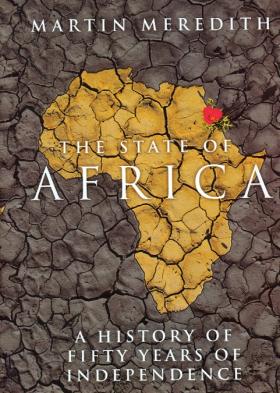 Guy Arnold’s and Martin Meredith’s books do just that for the last half-century, and do so on a scale worthy of their subject, the former at over 1000 pages, the latter at over 750. But they do so from different perspectives. Arnold is a developmental economist: his focus is more, though by no means exclusively, on the creation of the succession of economic plans that have been drawn up at various levels, with varying degrees of realism, and their seemingly inevitable failure. Meredith is a journalist who has covered the continent for most of the period of which he writes; his approach is to focus on politics, and their often brutal consequences for less powerful Africans. Neither account gives much succour to the optimist.
Guy Arnold’s and Martin Meredith’s books do just that for the last half-century, and do so on a scale worthy of their subject, the former at over 1000 pages, the latter at over 750. But they do so from different perspectives. Arnold is a developmental economist: his focus is more, though by no means exclusively, on the creation of the succession of economic plans that have been drawn up at various levels, with varying degrees of realism, and their seemingly inevitable failure. Meredith is a journalist who has covered the continent for most of the period of which he writes; his approach is to focus on politics, and their often brutal consequences for less powerful Africans. Neither account gives much succour to the optimist.
The decades around the turn of the nineteenth and twentieth centuries, the period of creation of the conquest states, were times of profound trauma for much of sub-Saharan Africa: new diseases of humans and livestock, displacement, brutal policies of suppression and forced labour saw up to 50 per cent of the population wiped out in places. The coming of independence, not everywhere but in many places, was a time of optimism and expectation, the starting-point of these two books.
During the colonial period a number of things happened. Tribalism came to resemble something closer to what we understand by the term today, a more rigid and exclusive form of social organisation than it had been hitherto. The state expanded enormously its capacity to rule, through law if possible but by subjugation if necessary, and white settler interests were always paramount. There were also lines of continuity: colonialists, thin on the ground in many places, had limited capacity to enforce their will, and so utilised in British Africa a system of indirect rule that relied on Africans working as intermediaries. The peculiar barbarism of white Southern Rhodesians is explained in part by their early achievement of self-rule; the colonial administration no longer acted as even a marginal brake on settler recalcitrance. A more thorough discussion of continuity and change in African history—and both books are large enough to have included it—would have located Africa’s coming to independence in an analysis of both the end of colonial governance and long-term African histories that had hitherto remained hidden.
Both books take regional and national approaches but do not attempt serious comparative analysis: northern Sudan resembles Arabia more than Africa; Ethiopia has a unique history that makes its political structures incomparable with its neighbours’. There is a need to distinguish specific political forms on the continent so as to highlight particular systems of power, and its use and abuse. This latest dissection of the continent, by historians and political scientists, may seem worthy of one of the map-makers in Berlin, but the consequences are far more benign: it helps to make sense of things.
Guy Arnold’s, the larger of the two, can be seen as a single-volume history but can also be used as a reference work, with essays on particular episodes and subjects across a book divided into four parts. 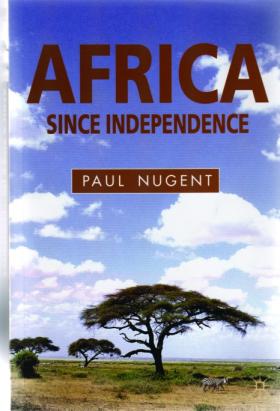 His unifying theme is economic policy, the attempts by African administrations, pan-African organisations and other multilateral organisations to devise strategies to raise growth and to increase welfare in education and health, which initially were successful in some places. Foreign intervention in the form of geopolitical rivalry, and aid, its value and the damage it can cause, are the corollary concerns.
His unifying theme is economic policy, the attempts by African administrations, pan-African organisations and other multilateral organisations to devise strategies to raise growth and to increase welfare in education and health, which initially were successful in some places. Foreign intervention in the form of geopolitical rivalry, and aid, its value and the damage it can cause, are the corollary concerns.
As a reference work Arnold is detailed and reliable: his set pieces are written in the monotone of the serious economic journalist—literate but not literature. But to take one sentence: ‘The human haemorrhage inflicted on Africa by the slave trade, which has been estimated as a loss of between 60 and 150 million Africans, remained the greatest indictment of the Afro-European relationship’. Initially, this appears to imply a tenfold increase in the normally accepted figures for the trade; in fact the figures are for the putative population loss inflicted on Africa: what Africa’s population would have been without the trade in humans. The discrepancy between 60 and 150 million indicates the difficulty of calculating figures in Africa with any degree of certainty. It also displays Arnold’s tendency to emphasise Western culpability while downplaying African complicity.
In any book, no matter how large, dealing with so vast a subject there will be a tendency to easy generalisation. Yet in dealing with a subject such as the relationship between the developed world—and now, with China, also the developing world—and Africa a more nuanced approach is needed. Many African leaders are politicians, building coalitions and recompensing constituencies, not just megalomaniacal kleptomaniacs ruling by brute force alone. They use, within all domestic and international limitations, their position within the world order to enhance their position at home and abroad, from a variety of motives. Musseveni in Uganda is a case in point. The rhetoric of neo-colonialism and dependency theory is no longer adequate, and newer, more complex thinking provides better explanations. Moralising, not Arnold’s style, explains nothing at all.
Meredith’s The state of Africa also covers independent Africa, but its chapter headings are more graphic than Arnold’s, the text racier. The direction of the narrative is sadly the same: from early hope to catastrophe of greater or lesser proportions, propelled by leaders of varying degrees of psychopathy, incompetence, bad fortune, and well-intentioned misjudgement. The figures bear this out: lower per capita incomes than at independence, increasing infant mortality and declining life expectancy rates, falling volumes of world trade, and literacy and numeracy rates that are only now beginning to pick up after the disastrous interventions of the International Monetary Fund and World Bank during the 1980s, when they destroyed all the gains made in literacy over the previous twenty years. There is an International Court of Justice in the Hague for crimes against humanity. There are officials from those well-heeled institutions who should be before it. They never will.
Both these books are useful. Neither manages to discern deeper patterns of behaviour within or across regions to achieve a real depth of understanding: their subject-matter is too broad, their historical depth too limited. There is also a problem of language: a single, unitary style is inadequate to a subject as massive as this. Complexity and diversity of subject needs complexity and diversity of language. You cannot seek to liberate Africa of its simplistic division by artificial boundaries and then constrain it within a universal anodyne. Myriad complication needs microscopic explanation, though paradoxically compactness can sometimes comprehend expanse more readily.
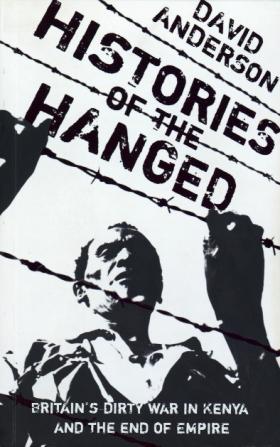 An older and shorter book, John Iliffe’s Africans: the history of a continent, might make a better starting-point by locating the last 50 years in a much longer time-span. Paul Nugent’s Africa since independence, now a couple of years old, while written for the general reader, does engage with questions of continuity and points of comparison. It precludes North Africa and the islands, but maintains a historically intellectual engagement with Africa in a way that neither Meredith nor Arnold, more intent on an ‘objective’ narrative, manage.
An older and shorter book, John Iliffe’s Africans: the history of a continent, might make a better starting-point by locating the last 50 years in a much longer time-span. Paul Nugent’s Africa since independence, now a couple of years old, while written for the general reader, does engage with questions of continuity and points of comparison. It precludes North Africa and the islands, but maintains a historically intellectual engagement with Africa in a way that neither Meredith nor Arnold, more intent on an ‘objective’ narrative, manage.
Two other recent books, David Anderson’s The history of the hanged and Caroline Elkins’s Britain’s gulag, cover a more compact event in African history, the Mau Mau rebellion in Kenya that precipitated independence. Until recently, despite the large literature, Britain and Kenyan whites had won the propaganda war. Mau Mau was portrayed as a savage atavistic attack by deranged Africans, incapable of facing modern life, on innocent white farmers and their lady wives, who were going about the business of developing Kenyan agriculture while the kiddies played with Elsa on the lawn. Thirty-two white settlers were killed, a tiny fraction of the total.
In fact Mau Mau was a Kikuyu (the largest and most commercial of Kenya’s peoples) civil war, with the British on one side. Having relegated their erstwhile allies, the deracinated and decimated Masai, to a faraway dust bowl, the British allied with Kikuyu businessmen to appropriate all remaining cultivable land that hadn’t been appropriated by white settlers. A Kikuyu youth’s coming of age, establishing a family, his ceasing to be a youth, depended on cultivation of a personal smallholding: that is what defined his status, his place in the world, and this was now denied him. He had nowhere to go, except perhaps the humiliations and uncertainties of the Nairobi day-labourer market. Revolt ensued. The British had learned nothing from the Irish land wars. Direct African casualty rates were between 10,000 and 20,000 dead. No one comes out of it well: Kikuyu slaughtered Kikuyu with an intensity that explains why there are few public monuments to the events in Kirkland, or elsewhere; attitudes were deeply ambivalent and rarely uttered in public once the British left.
Anderson’s hanged were the casualties of repression as Britain took to mass executions on a scale unseen elsewhere in the colonies. More than 1,000 died. Some were guilty of horrific crimes. Some were judicially murdered. Outstanding is Anderson’s account, based on detailed local studies, of the build-up of tensions between dispossessed Kikuyu and their British-allied wealthy elders that first led to the formation of an oath-bound organisation in 1944, and then to the outbreak of hostilities in 1952. So are his accounts of tensions within Government House, and the military operations that led to the revolt’s suppression. Sense of place and people drives a narrative that is consummately researched and sensitively rendered. It ends with a moving plea to Kenyans for full public recognition of what happened.
Elkins details British counter-insurgency measures: the clearing of Nairobi of Kikuyu, and the opening of mass screening centres and internment camps in some of the most remote and driest parts of Kenya. Casual murder of African prisoners was commonplace, sadism the stock-in-trade of British and African guards alike. Outside, there was a policy of enforced ‘villagisation’ in wired compounds where women were routinely starved and raped by passing British soldiers and their Kenya Home Guard subalterns. Elkins estimates that upwards of 100,000 Kikuyu may have died. Her figures have been seriously contested, but the general impression stands. The colonial secretary, Lennox Boyd, routinely announced in parliament that things were under control and improving. Opposition scepticism, led by Barbara Castle, was vindicated when details of the beating to death of prisoners in Hola camp emerged.
Two postscripts. In a show trial that began in 1952, nationalist leader Jomo Kenyatta, the future president of Kenya who always condemned Mau Mau, was tried before a judge, Ransley Thacker, who negotiated a £20,000 resettlement fee from the British government should he find Kenyatta guilty and have to leave the colony on safety grounds. He was on a pension of £474 p.a. at the time. Kenyatta was found guilty on perjured evidence paid for by the British administration. Ian Henderson, a Kenyan-born 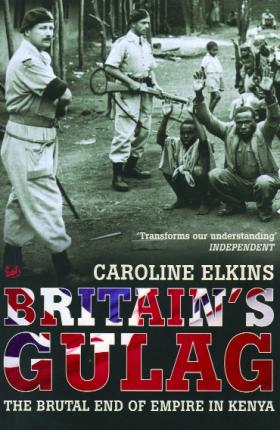 Kikuyu-speaker, tracked and captured two major Mau Mau leaders, Dedan Kimathi and General China. Kimathi, who was insane, was hanged. China may have betrayed his oath and his comrades and opened negotiations to end hostilities. He became a minister in the first Kenyatta government and did not speak publicly of Mau Mau. At independence, Henderson moved to Rhodesia, where he plied his trade in support of white settlers resisting African nationalism. He was last heard of in the Middle East, where he was working as a counter-insurgency expert and was under investigation by human rights organisations for using torture. His retirement home is in the south of England.
Kikuyu-speaker, tracked and captured two major Mau Mau leaders, Dedan Kimathi and General China. Kimathi, who was insane, was hanged. China may have betrayed his oath and his comrades and opened negotiations to end hostilities. He became a minister in the first Kenyatta government and did not speak publicly of Mau Mau. At independence, Henderson moved to Rhodesia, where he plied his trade in support of white settlers resisting African nationalism. He was last heard of in the Middle East, where he was working as a counter-insurgency expert and was under investigation by human rights organisations for using torture. His retirement home is in the south of England.
Read together, these books speak of African history, with all its suffering and all its resilience.
Eoin Dillon is researching civil society in East Africa at the Centre for Development Studies, University College Dublin.
















